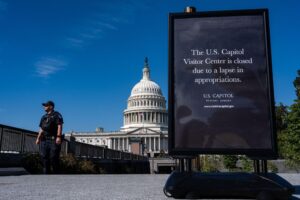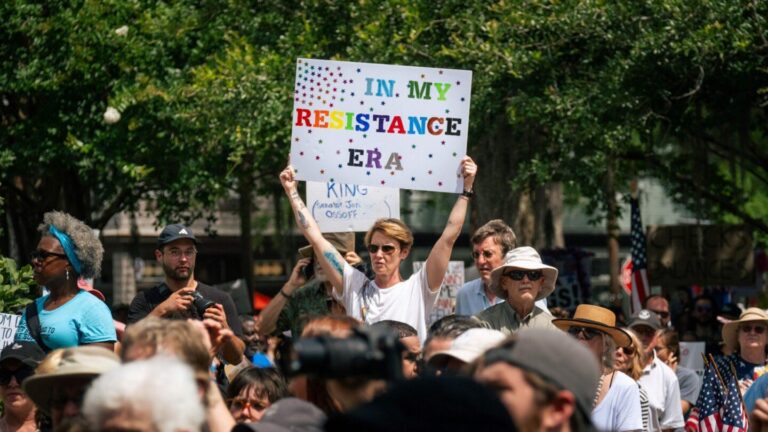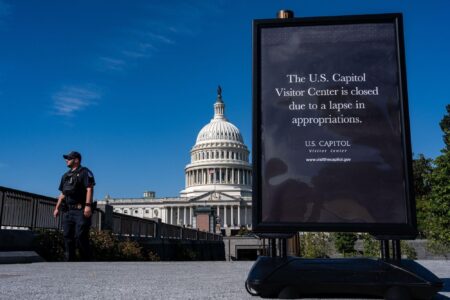Examining the “No Kings” Movement: A Grassroots Response to the June 14 Military Parade
Origins and Objectives of the “No Kings” Counter-Demonstrations
As President Donald TrumpŌĆÖs military parade in Washington, D.C. neared on June 14, a notable grassroots movement emerged under the name “No Kings.” This coalition of activists arose in direct opposition to the planned display, voicing apprehensions about the use of military spectacle as a political tool. They contend that such grandiose exhibitions evoke authoritarian imagery that threatens democratic principles and civil freedoms. The movementŌĆÖs core mission is to challenge the normalization of militarism in political arenas and to advocate for a more inclusive, justice-oriented vision of patriotism.
The “No Kings” campaign centers on several key principles:
- Opposition to authoritarian iconography: Prioritizing democratic ideals over symbols reminiscent of monarchy or dictatorship.
- Advocacy for civilian control: Calling for transparency and public oversight in military affairs to prevent misuse of power.
- Promotion of diverse patriotism: Celebrating national pride that respects human rights and multiculturalism rather than military dominance.
- Critique of political pageantry: Questioning the intent behind using military parades as vehicles for political gain.
Shaping Public Opinion and Political Dialogue
The “No Kings” counterprotests sparked a polarized national conversation about the role of military displays in political life. Supporters framed their actions as a necessary resistance to what they perceived as an alarming militarization of the presidency and a dangerous drift toward authoritarian leadership styles. Conversely, critics accused the movement of disrespecting the armed forces and undermining national unity during a traditionally patriotic occasion. This clash underscored how symbolic events can deepen ideological divides rather than foster consensus.
Beyond public sentiment, the counterprotests influenced political discourse by bringing several critical issues to the forefront:
- Reevaluating military presence in civic events: Debating whether armed forces should be prominently featured in political ceremonies.
- Scrutinizing executive authority: Raising concerns that the parade served more as political theater than a genuine tribute to service members.
- Empowering grassroots activism: Highlighting the growing effectiveness of citizen-led movements in challenging government-sponsored spectacles.
This dialogue compelled policymakers and media to confront complex questions about patriotism, protest rights, and the limits of public displays, setting the stage for future debates on military involvement in political expression.
Ensuring Safety and Coordination During the Counterprotests
Organizers of the “No Kings” demonstrations placed a strong emphasis on safety and logistical planning to protect participantsŌĆÖ rights while minimizing risks. In partnership with local law enforcement, they established designated protest zones nearŌĆöbut safely distanced fromŌĆöthe parade route and military security perimeters. Trained marshals equipped with communication devices were deployed to manage crowds and defuse potential conflicts. Additionally, clear signage and pre-event briefings informed attendees about emergency protocols and medical support availability.
Key safety and logistical measures included:
- Collaboration with city police for traffic control and rapid emergency response
- Presence of volunteer medical teams providing on-site first aid
- Strict adherence to peaceful assembly guidelines and transparency
- Real-time updates via social media to communicate route changes or safety alerts
| Logistical Component | Description |
|---|---|
| Assembly Points | Three locations within two blocks of the parade route |
| Communication Tools | Two-way radios and a dedicated hashtag for information sharing |
| Emergency Preparedness | Local fire and EMS units on standby; volunteer medics present |
| Accessibility | Wheelchair-accessible routes and assistance stations |
Approaches to Constructive Civic Participation Amid Political Strife
In a climate marked by heightened political tensions, the “No Kings” organizers underscored the necessity of thoughtful planning to amplify their message without escalating conflict. They prioritized establishing open communication channels with law enforcement to ensure orderly conduct and compliance with legal requirements. This cooperation facilitated the acquisition of permits and the designation of protest areas, reducing the likelihood of confrontations during the parade.
Furthermore, the movement emphasized peaceful protest methods and community engagement to build unity rather than division. Their strategic approach included:
- Nonviolent demonstration: Upholding calm and disciplined behavior to maintain credibility and avoid negative portrayals.
- Accurate information sharing: Leveraging social media responsibly to provide timely updates and counteract misinformation.
- Inclusive outreach: Inviting diverse voices and engaging undecided individuals to expand the movementŌĆÖs support base.
Conclusion: Reflecting on the Significance of the “No Kings” Movement
As the June 14 military parade unfolded, the “No Kings” counterprotests served as a powerful reminder of the deep divisions surrounding the event and the broader political landscape. These demonstrations brought to light contrasting views on the paradeŌĆÖs symbolism, raising critical questions about the intersection of military display, political authority, and democratic values. Observers and participants alike recognized the importance of understanding the diverse motivations behind both the parade and its opposition to fully appreciate this pivotal moment in American political discourse.





